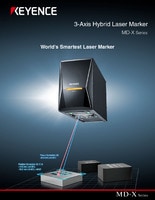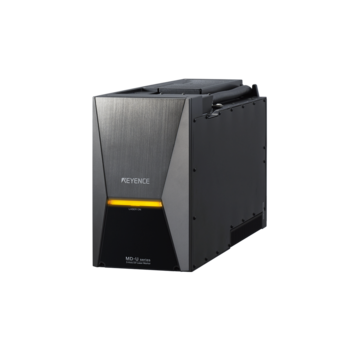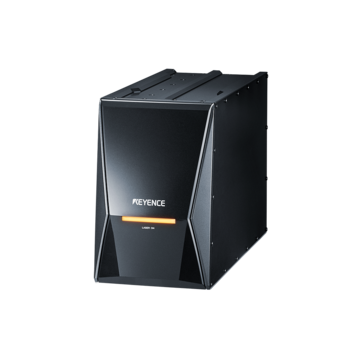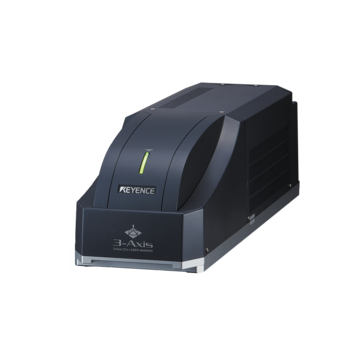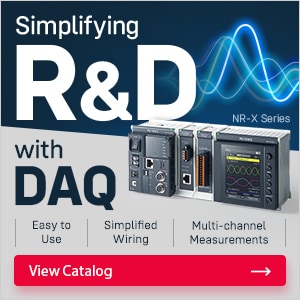Industrial Laser Marking Systems / Laser Markers
How Laser Marking Is Replacing Labeling
-
Tags:
- Food and Pharmaceutical , Medical , Laser Labeling
Key Takeaways
- Laser marking creates permanent, abrasion-resistant codes that prevent detachment and tampering.
- Non-contact laser marking boosts production speed and minimizes maintenance downtime.
- Eliminating labels and inks reduces consumable costs and supply chain complexity.
- High-resolution marking enhances traceability and compliance with industry regulations.
- Flexible laser systems accommodate various materials and shapes without retooling.
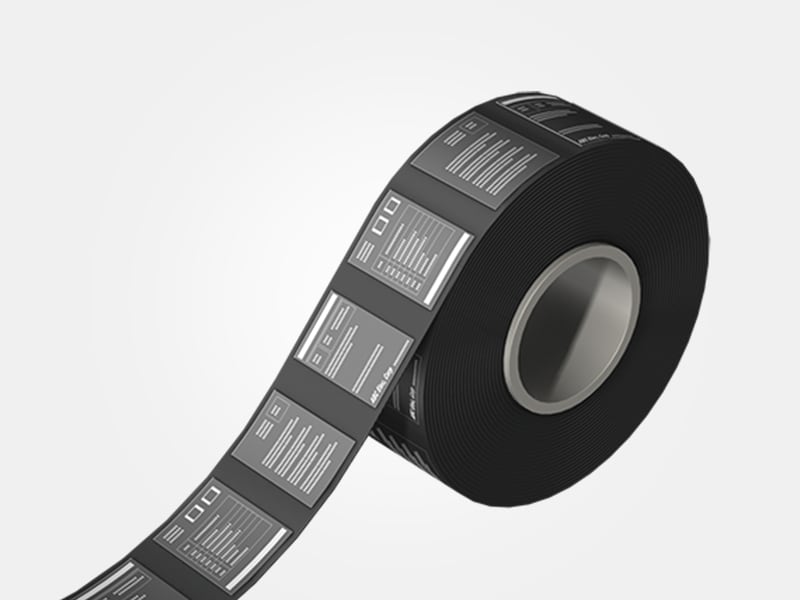
The use of laser marking technology is increasingly replacing adhesive labels in manufacturing companies. Growing concerns regarding durability, sustainability, and production efficiency are addressed by this change. Companies can replace labels with laser marking systems to create permanent marks that eliminate waste while delivering superior quality results.
UV laser systems produce high contrast, accurate marks without generating excessive heat. This makes them ideal for delicate materials that conventional marking techniques can harm, such as glass, polymers, and medical components. Permanent marks that are resistant to scratching, fading, and chemical exposure are produced by the method.
Why Replace Labels with Laser Marking?
Adhesive labels present several challenges in manufacturing environments. They can peel off during shipping, become illegible when exposed to chemicals, and create waste streams that increase disposal costs. Labels also require ongoing inventory management and can slow down production lines.
Laser labeling fixes these problems by leaving marks on the product's surface. The process works well with existing manufacturing lines and does not require additional consumables or supplies. Businesses report significant cost savings within months after deployment.
Many firms choose laser marking solutions because of environmental concerns. Due to backing paper, adhesive residue, and discarded labels, traditional labels produce a significant amount of waste. Label disposal is a common problem in manufacturing operations, especially when handling food-grade or medical applications that call for particular care.
Because laser marking is so accurate, it improves quality control and product tracking. Each mark is the same in both placement and sharpness, allowing automated inspection equipment to perform better. The final product's quality is improved, and fault rates are decreased by this consistency.
We’re here to provide you with more details.
Reach out today!

Laser Marking Benefits
In comparison to labels, laser marking has several advantages.
No Adhesive, No Waste
Adhesive materials are completely unnecessary when using laser labeling. This lowers the cost of materials and storage needs while also producing a cleaner atmosphere. Label inventory management and adhesive failures that could stop manufacturing lines are no longer issues for businesses.
The absence of adhesive also means products maintain their original surface properties. Medical devices, food packaging, and electronic components benefit from this approach because surface contamination becomes impossible. Plastic part marking through laser technology maintains the integrity of the base material.
Waste reduction extends beyond the elimination of label backing and adhesive residue. Laser marking requires no consumable materials once the system is installed. This reduces ongoing operational costs and simplifies supply chain management for manufacturers.
Durability and Chemical Resistance
Harsh environments that would ruin conventional labels are not able to harm laser marks. They do not degrade even when exposed to high temperatures, acids, and solvents. Because of this, laser labeling is perfect for industrial components, medical equipment, and automobile parts that must withstand harsh operating conditions.
Laser marking produces a permanent product identification that endures throughout the product's existence. Even after years of usage, laser marks remain readable and clear, in contrast to printed labels that peel or fade. When required, this dependability facilitates product recalls and enhances warranty tracking.
UV laser marking adds further wear resistance by producing marks that pierce just beneath the surface. The marking process modifies the material's molecular structure, resulting in a permanent modification that is impossible to undo without causing harm to the final product.
Industries Leading the Shift
Healthcare manufacturers were among the first to adopt laser marking technology. Medical devices require permanent identification that survives sterilization processes and chemical exposure. Laser marking applications in healthcare include surgical instruments, implants, and diagnostic equipment.
The automotive industry has embraced laser labeling for component traceability. Automotive laser marking provides permanent part numbers and batch codes that survive paint processes and extreme operating conditions. This improves quality control and supports warranty claims.
Food packaging represents another growing application area. Laser marking directly on packaging materials eliminates the need for separate labels while providing tamper-evident identification. The marks integrate with existing packaging designs without affecting product safety or appearance.
Electronics manufacturers use laser marking for component identification and branding. The precise control possible with UV lasers allows for extremely small marks that don't interfere with device functionality. This capability becomes increasingly valuable as electronic components get smaller and smaller.
Laser Marking vs Traditional Labels: A Side-by-Side Comparison
Laser vs adhesive labels reveal significant differences in performance and cost-effectiveness. Traditional labels cost between $0.01 and $0.10 per unit, while laser marking has virtually no cost associated with the marks it provides after initial equipment investment. The payback period usually ranges from six months to two years, depending on production volume.
Laser etching is preferred in high-volume applications based on speed comparisons. While label application usually reaches a maximum of 500 parts per hour, laser etching may mark products at speeds of over 1,000 parts per hour. As marking complexity rises, this speed benefit becomes more noticeable.
Consistency in quality is another important distinction. Over millions of cycles, laser marks remain the same in terms of appearance and placement. Misalignment, air bubbles, and adhesive failures can all affect label application, leading to problems with quality and production delays.
Laser marking is significantly favored by its environmental impact. Backing paper, faulty labels, and packing materials are only a few of the major waste streams produced by traditional labeling. During operation, laser labeling uses very little electricity and generates no waste.
Real-World Use Cases in Manufacturing
Metal marking applications demonstrate the versatility of laser technology across different materials. Stainless steel medical instruments receive permanent identification marks that survive repeated sterilization cycles. Aluminum automotive components get batch codes that remain legible after paint application and years of service.
Laser marking on plastic requires careful parameter selection to avoid heat damage. UV lasers excel in this application because they generate minimal heat while creating high-contrast marks. Common plastic applications include medical device housings, electronic enclosures, and consumer product branding.
Glass marking presents unique challenges that laser technology handles effectively. Pharmaceutical bottles receive permanent lot codes without compromising container integrity. Solar panel manufacturers mark glass substrates with tracking information that survives decades of outdoor exposure.
Flexible materials like films and fabrics also benefit from laser marking. Packaging films receive date codes and batch information without creating weak points that could cause tearing. Technical textiles get permanent markings for traceability without affecting material properties.
The semiconductor industry relies on laser marking for wafer identification and component coding. The precision and cleanliness of the laser process make it ideal for cleanroom environments where contamination must be avoided.
Plastic marking techniques continue to evolve as new materials enter the market. Biodegradable plastics, advanced composites, and specialty polymers all require specific laser parameters to achieve optimal marking results.
Laser marking vs labeling will likely see continued growth as sustainability concerns increase and laser technology costs decrease. The combination of environmental benefits, cost savings, and superior performance makes laser labeling an attractive option for manufacturers across all industries.
Contact us to learn more about how our advanced technology can help take your business to the next level.
Contact Us
FAQs
How Does Laser Marking Affect Plastic Part Lifespan?
Laser marking typically has minimal impact on plastic part lifespan when proper parameters are used, as the marks penetrate only slightly below the surface without compromising structural integrity.
Can Laser-Marked Plastics Withstand Sterilization Processes?
Yes, laser marking on plastic remains stable during standard sterilization processes, including steam, gamma radiation, and ethylene oxide exposure without degrading or becoming illegible.
What Industries Benefit Most From Replacing Adhesive Labels?
Healthcare, automotive, and food packaging industries see the greatest benefits due to their requirements for permanent identification, chemical resistance, and regulatory compliance.
We’re here to provide you with more details.
Reach out today!


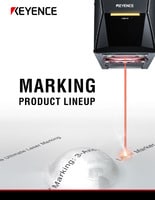
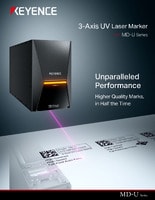
![UV Laser Marker Application Guide [High Contrast Marking]](/img/asset/AS_95184_L.jpg)
